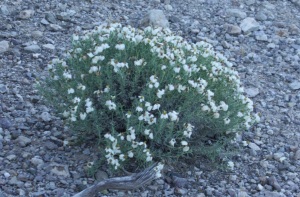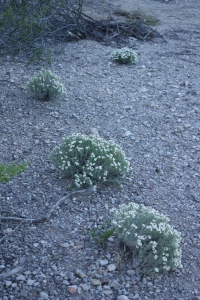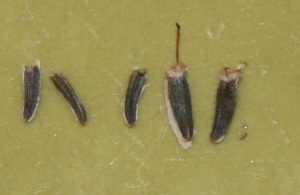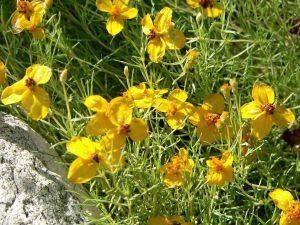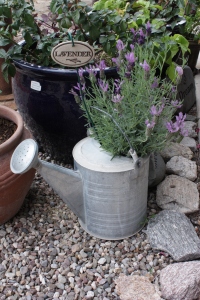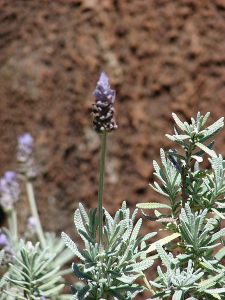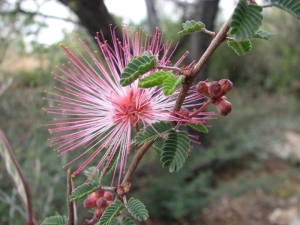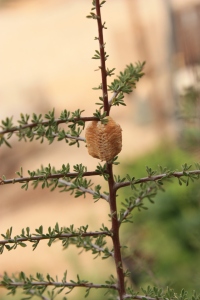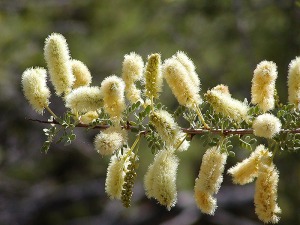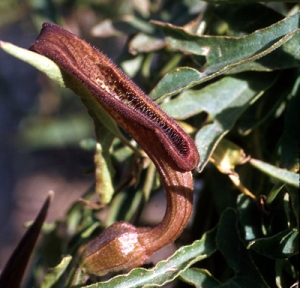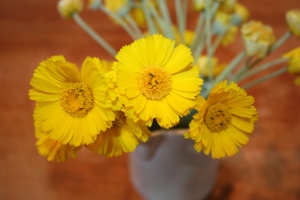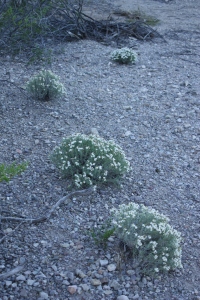Say Zinnia
Say “zinnia” and most people think of the garden flowers. A pleasant annual for the summer garden, available in shades of oranges and purple. A bit old-fashioned perhaps, although the plant breeders keep trying to entice us with exotic new hybrids.
Having grown up in the Sonoran Desert, to me “zinnia” means Zinnia acerosa, a low growing native shrubby perennial occasionally encountered on hikes. Only later, when I interned in Philadelphia, did I encounter the colored, non-shrubby garden varieties.
Landscape with Desert Zinnias
Here in the Southwest, desert zinnia are occasionally planted in the low water landscape to help “fill in” spaces, since it is a diminutive plant reaching about a foot tall when it gets ample water. It’s under-utilization in the landscape is a shame because it deserves ample space in every wildlife garden. Desert zinnia is excellent for attracting many of the smaller native butterflies.
Planting Desert Zinnias
You can purchase desert zinnia in pots from nurseries, plant them in well drained soil, and water to help them become established. If you are thrifty, nice way to get desert zinnia established in your yard is to plant them as seed. If desert zinnia live near you (and they are distributed in the desert areas of Arizona, New Mexico and Texas), simply collect a handful of the paper flowers and scatter them in the landscape.
Ideally scrape a shallow hole around a quarter inch deep, sprinkle the seed in, and cover with soil. This is to hide it from the voracious seed eating birds. Add water once a week, and soon you will have a number of plants. It’s ease of establishment and hardiness from USDA Zone 10 to Zone 6 have lead to Zinnia acerosa being included in revegatation mixes.
Prairie Zinnia
Consider the prairie zinnia, Zinnia grandiflora. Found in Arizona, New Mexico, Texas, as well as Colorado, Oklahoma and Kansas, it grows on plains in the foothills and other dry habitat. Like it’s desert cousin, the flowers are a nectar source for butterflies, and the plant a low-water user. I haven’t tried growing it from seed but it should just as easily establish from seed as it’s desert cousin.
![]() If you live in Southeastern Arizona, please come to one of my lectures. Look for me at your local Pima County Library branch, Steam Pump Ranch, Tubac Presidio, Tucson Festival of Books and more. After each event I will be signing copies of my books, including the latest, “Southwest Fruit and Vegetable Gardening,” written for Arizona, Nevada and New Mexico (Cool Springs Press, $23).
If you live in Southeastern Arizona, please come to one of my lectures. Look for me at your local Pima County Library branch, Steam Pump Ranch, Tubac Presidio, Tucson Festival of Books and more. After each event I will be signing copies of my books, including the latest, “Southwest Fruit and Vegetable Gardening,” written for Arizona, Nevada and New Mexico (Cool Springs Press, $23).
All photos (except where noted) and all text are copyright © 2016, Jacqueline A. Soule. All rights reserved. I receive many requests to reprint my work. My policy is that you may use a short excerpt but you must give proper credit to the author, and must include a link back to the original post on our site. Photos may not be used.

